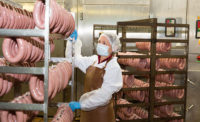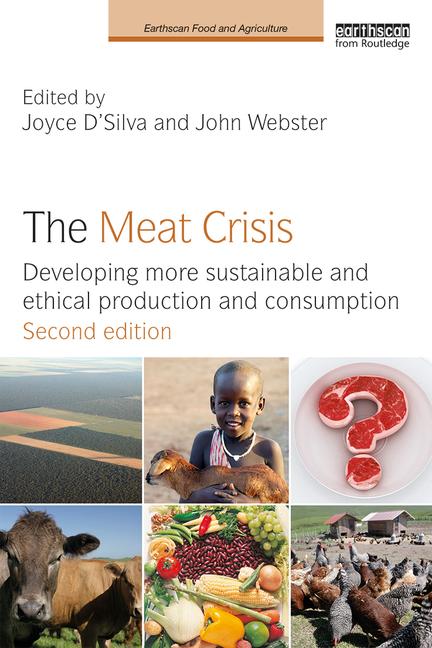Guest Commentary | Sustainability
Sustainability: The process of opportunities

T-bones, porterhouses, cowboy ribeyes — all classic steakhouse fare found in some of those “old school,” dimly lit carnivore havens of yore. But the popularity of bone-in beef cuts has waned a great deal over the decades to the point that many restaurants offering beef steak items offer them in only the boneless form. As a result, a new spin on the steak dining experience is in fact making the older style of bone-in beef cuts a cool new movement.
Plumes of dust randomly appeared on the horizon as I scanned across fields while planting corn during this late spring season. Planters scratched horizontal lines in the ground as if it were a large Etch-A-Sketch. The same field I was planting today, my great-grandfather planted 150 years earlier. As I peered over the seed population monitors and gauges, my mind wandered, “How far have agriculture and food manufacturing evolved over the last century? How did previous generations continually improve agriculture production, methods and technology over the last century? Sustainability? Was that the answer?”
Today, many organizations use the term “sustainability” in an attempt to satiate needs of stakeholders, consumers and public opinion. According to the Cambridge dictionary, sustainability is “the idea that goods and services should be produced in ways that do not use resources that cannot be replaced and that do not damage the environment.” True believers and practitioners of sustainable practices evaluate, plan and think through the short- and long-term utilization of resources. Sustainability should be more than a buzzword. For many decades, some meat processors have been keeping their nose to the grindstone, implementing sustainable practices. But for some advocates, no matter what advancements, activities or applications our industry takes, it will never be enough.
Sustainability goal
What purpose would an organization have to pursue sustainable practices? One reason could be the triple bottom line, which was coined by John Elkington as “the approach to measure financial, social and environmental performance of an organization.” The first area of financial measure seems to be a well-understood driver of most aspects of human activity and business. One does not need to read Adam Smith’s “The Wealth of Nations” to understand business functions that produce goods or services to ultimately make a profit for said company and benefit the consumers’ needs. Organizations, board members and managers have fiduciary duties to shareholders. There also is a duty to stated missions or tenets of an organization.
The social aspect can affect a company based on the extent to which its operations are reported. Annual reports provide solid information regarding the past performance and a general forward-looking statement. But what happens when an unforeseen event occurs that may not truly reflect a company’s dedication and commitment to sustainable practices? Unfortunately, anomalies may affect a company’s best practices and opportunistic, agenda-focused agents systematically bring the long knives out against that company. It is therefore critical to maintain a constant vigil and control the social message regarding the positive sustainable activities in which a company engages.
In the last area of the triple bottom line (the environment), in my three decades of experience in the meat industry and more than four decades in agriculture, I have not encountered anyone who woke up with the thought, “What can I do today to destroy the environment?” Some people and organizations would lead people to believe that such idiotic thoughts are prevalent in manufacturing industries. As we understand and take seriously, protecting the environment is critical to the sustainability of agriculture and our industry. So why would anyone take actions to adversely affect a key element of this supply chain? No one would consciously do so. I will admit that with any industry, service sector, government or organization, there may be “bad apples.” Let us not allow a few bad apples and others reporting on our industry to portray us in a negative light. How can we be proactive and lead other industries in sustainability efforts?
Leading in the future
The future for sustainable practices shows promise with new technologies, equipment and applications being developed and implemented in all areas of food production. Growing grains and farming practices continually evolve and have an impact on the supply chain for animal nutrition. It is exciting to be part of this new era of the food chain with the understanding of how far our industry has evolved.
Water is needed in virtually all areas of food production. First, many companies have started to reduce the overall volume of water used. Second, water used in cleanup activities is being conserved by implementing better dry pickup activities, reduced flow stations and more eco-friendly chemicals. Third, water treatment technologies continue to improve for the effluent of water leaving plants and returning to local municipal treatment facilities. This effective water treatment is returning water to municipal areas cleaner than when the water was received.
Waste in the physical production processes is also being reduced. Of course, products that are manufactured use volatile raw resources with finite shelf life. Physical waste affects many areas of a process. If product is not making it into finished goods and the consumer package, then waste is incurred and productivity is reduced, resulting in lost profits and higher costs.
The physical envelope of facilities has also improved over the years. Some organizations are working toward Leadership in Energy and Environmental Design (LEED) certification. This certification stresses the importance of using green building material, recycled products and criteria to meet standards designed to improve the coexistence of buildings with its surrounding environment. Evaluating buildings in this manner is a way in which we can take a holistic view of facilities functioning in the environment.
There are many other topics of processes and buildings in which we can improve the sustainability of the food chain and our industry. Can we do better? Of course. Sustainability is a process, not a project that has a beginning and an end. But as we navigate the challenging waters of public opinion and narratives, we need to document and accurately identify how the meat industry is leading the way in sustainable practices. NP
Looking for a reprint of this article?
From high-res PDFs to custom plaques, order your copy today!








